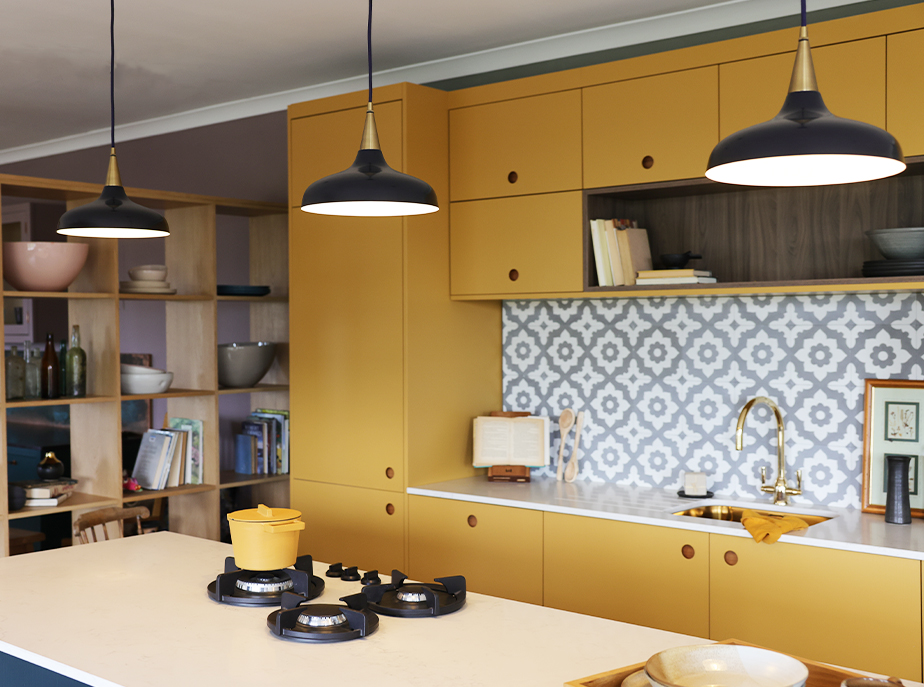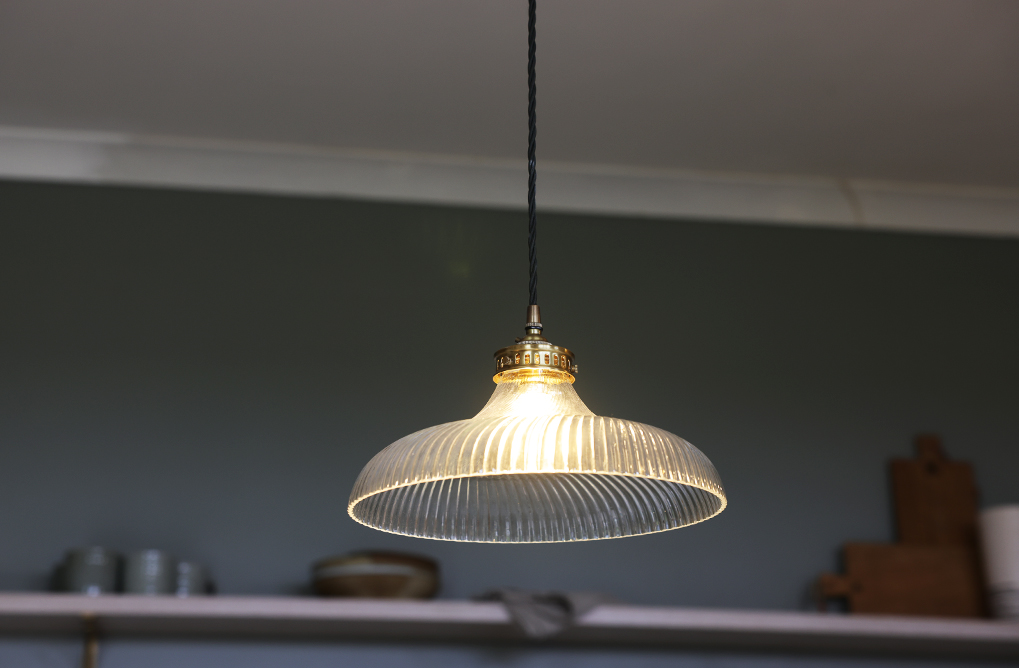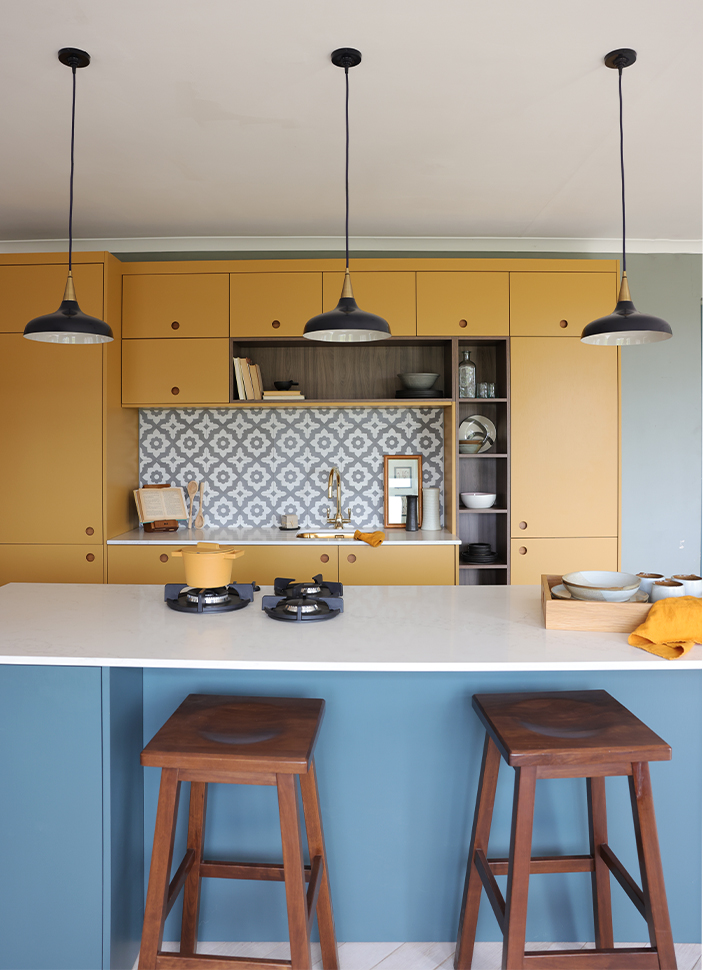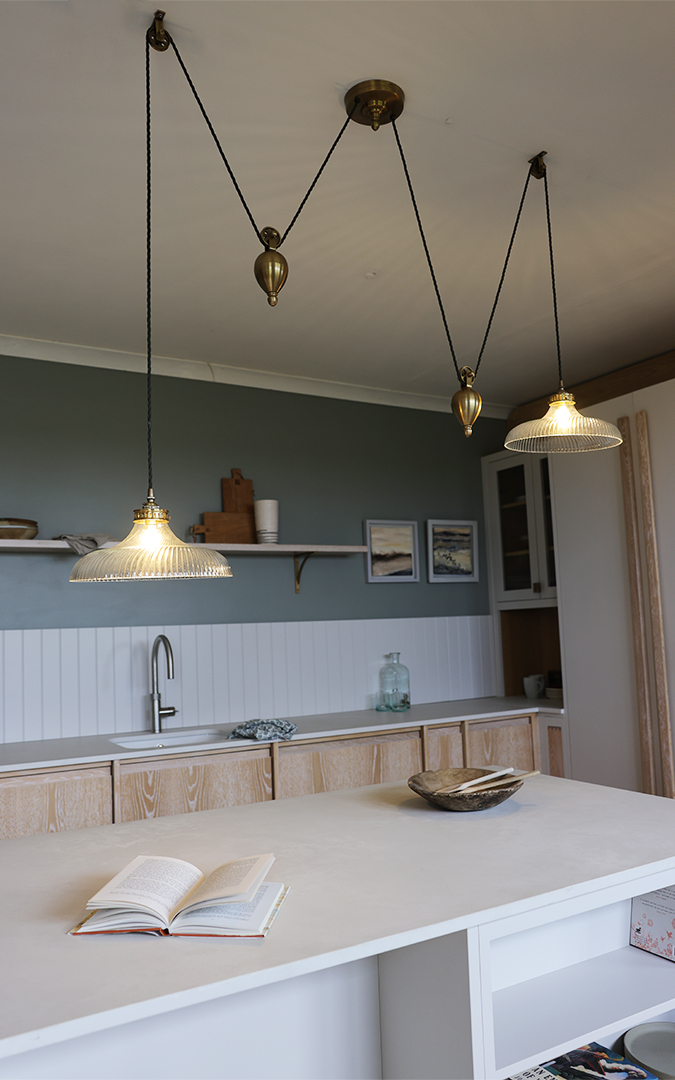Pooky is the place to go for gorgeous decorative lighting – lights that look as though they cost a fortune, but don’t. And since we know how important lighting is in a great kitchen design, we invited the Pooky experts to share their insider secrets.
Follow these seven tips and your kitchen will be a brighter, more beautiful and more practical space…

1) Plan lighting for the different roles that your kitchen plays
If you’re redesigning your kitchen or building a new one, make sure you include lighting right at the start of your planning. First, think about how you and your family use your kitchen – cooking, eating, entertaining, playing games, home working… That will help you plan your lighting scheme and get the right balance between practical task lighting (for chopping onions etc) and ambient light for different moods and activities.
The big thing is not to limit yourself to a few overhead light sources, but to have multiple lights and lamps on different circuits so you have plenty of options. Lighting can also help you mark and define different ‘zones’ for different tasks (cooking, eating, working) within your kitchen space.
2) Make sure you have enough lumens
As working rooms, kitchens generally need more light than sitting rooms, bedrooms and so on. The amount of light a bulb produces is measured in lumens (not watts!) and as a rule of thumb, a kitchen will normally need around 70-80 lumens per square foot.
So you can work out approximately how much total light you’ll need in your kitchen by multiplying the length and width of the room to get the square footage, and then multiplying this figure by 70. Then multiply the square footage by 80, and between those two numbers you’ll have a range of total lumens to aim for. (If this stuff all seems a bit mysterious, check out our guide How much light do you need in a room?)

3. Choose lights to express your style
Lights don’t just create mood and let you see things – they’re some of the most useful weapons in your home interior design armoury. Ceiling pendants in particular really tie a room together, and you can choose materials, colours, shapes and styles that match the style of your kitchen cabinets, or deliberately contrast.
From industrial-style ceramic pendants to glass chandeliers, brass wall lights to cosy table lamps with fabric shades, lights are the easiest way to incorporate visually interesting talking-point objects into a room, add depth and detail, and express your personality. Don’t waste the opportunity!
4. Make smart use of recessed lights and spotlights
At Pooky we’re no great fans of spotlights – so soulless and samey! But we grudgingly accept they have their place…. For example, a single low-hanging pendant light over a work surface won’t solve the issue of task lighting on its own because if you’re chopping veg beneath it you’ll block the light and be working in your own shadow. Adjustable spotlights, recessed lighting and undercabinet lights fitted above the sink and cooker and over the counters will help to banish the shadows and provide the working light you need.
So the secret is to use spotlights for what they’re good at – i.e. giving practical light – while your pendants and other lamps bring the style and the atmosphere.

5. Use lights to draw attention to your kitchen’s best features
Clever interior designers use lighting to highlight the best features of a room (and conversely, to draw attention away from the worst ones!). Wall lights are perfect for this: uplighters will help to wash light upwards along the wall and towards the ceiling, giving a more open feeling to smaller or low-ceilinged spaces. Downlighters will help to give a big empty space a cosier feel.
Position lamps in corners, shelves and alcoves that you want to showcase, or even inside glass cabinets. Cordless rechargeable table lamps are just the job for spots with no electrical sockets.

6. Hang pendants like a pro
Two classic interior design rules: hang pendants in threes, and hang them a bit lower than you might expect.
The age-old ‘rule of three’ is known to all interiors enthusiasts, and it doesn’t just apply to lights hanging in rows over an island, bar or long table; trios also look good in ‘clusters’ over square or round tables. In fact, odd numbers always work well for rows of lights – try fives, even sevens for smaller pendants (or if you’re lucky enough to have an enormous kitchen).
As for height, the most common mistake is to hang pendants too close to the ceiling, where they lose their visual impact. They should normally hover around 30-36 inches from the top of a kitchen island. Err on the side of low.
7. Don’t be frightened to break the rules
We’ve given you a lot of rules in this article – and if you follow them you can’t go wrong – but the truth is that interior design ‘rules’ are there to be broken by brave freestylers. For example, if you’re feeling bold you can ignore our pendant rules and make a striking statement by varying the height of your lights to create a staggered, asymmetrical effect.
We’ve even created a pendant fitting called the Equilibrium that allows you to play around with different heights for a trio or (breaking the rule of three) a pair of pendants. So trust your eye and your taste – and create the unique kitchen space that works for you.

See more of Pooky’s beautiful kitchen lighting here – and find lots more lighting tips and inspiration on their interiors blog























